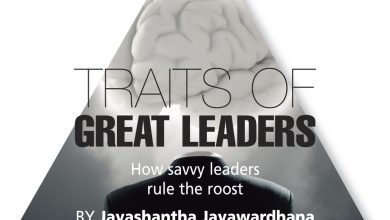BUSINESS DEVELOPMENT

INNOVATION IS A CHALLENGE
Adopting radical or disruptive innovation for growth – Dr. Muneer Muhamed

Marketing poses numerous problems for many enterprises. Most brand and marketing managers focus too much on short-term gains and market share. This issue of short-term focus drives marketers to pursue incremental innovation – rather than radical and disruptive innovation.
SMEs need not worry too much about analysts’ scrutiny and can look at growing beyond a few quarters. Horizon 1 is where an SME has its current products and services. Horizon 2 will be the next Horizon 1.
But most companies pursue incremental innovation to extend a product’s lifecycle. Very few engage in radical or disruptive innovation in Sri Lanka and compete in Horizon 3. That’s where many uncertainties loom – including the capacity to serve those needs as well as market acceptability issues such as autonomous cars or nano tech.
Enterprises need to innovate to compete today and in the future.
How does one balance this dual orientation? How can SMEs drive necessary innovation in the present while investing in disruptive technologies, business models, processes, acquisitions and customer experiences that set the course for the future? And how do SMEs foster innovation beyond the current product?
Innovation should be in the organisational structure, networks, financial models, business units, distribution channels and so on. This will accelerate a competitive advantage for the future. SMEs need to balance these two by sequentially switching focus from disruptive to incremental or vice versa.
It’s a lot like what tech companies are doing by constantly monitoring transient opportunities in the marketplace, building new platforms and then adding modules that will be the future Horizon 1 for them.
If SMEs don’t disrupt their own business models, someone else will do it and marketers should be worried about this. For example, think about how WhatsApp and similar apps have eroded telecom revenue and Amazon has disrupted IBM’s business.
I work with a Silicon Valley disruptor that helps large companies disrupt inside out at lightning speed. Local companies should be thinking of setting up disruptive innovation centres and save themselves from stagnating or copycat business models.
So how does marketing incorporate design thinking into its function?
Take for instance how Nestlé, Pepsi and Citibank have incorporated design thinking into their organisations, not simply to redesign their products but also review systems, processes and workflows.
What can we learn from them to deploy design thinking? And what’s the dark side of design thinking – what does it create in terms of unintended problems for the business?
Marketing should also think about how to create platform products. It’s not enough to have popular products. Successful companies think in terms of platforms (much like vehicle manufacturing platforms), franchises and ecosystems.
Consider Google and American Girl. They’re not simply products; they comprise an entire ecosystem of products, information, brands and retail experiences. What lessons can SME marketers learn from them?
Marketers should also consider investing in learning, building prototypes, and understanding how to fail fast and cheap.
What do great companies do in this area? Can large companies set up lean startup models or is it almost impossible for big organisations to implement them? And isn’t it easier for smaller companies to do this?
What we practise and help SMEs embrace is called discovery driven growth, which will provide lessons for marketers to test assumptions and undertake fast market tests at low costs. How can they conduct such tests in a ‘fail fast’ way and keep their intentions below the competitors’ radar?
SME marketers should also worry about the right innovation metrics and integrate them into their processes.
How do you differentiate between the number and quality of innovations? Which innovation metrics should you build into reward and evaluation systems, and for which teams? In addition, which innovation metrics may have unintended consequences – and what are they? How can negative outcomes be mitigated?
Marketers should be concerned about structural changes in the company, which are implemented to enhance innovation outcomes. How does one evaluate the innovation project team?
We are launching a six month programme to help companies drive such on-the-job innovation skills building. And the outcomes can be decided within those six months.
What determines whether you should make or buy? Is there a viable business model to which you can effectively outsource innovation and only buy what is successful? Can you still ‘win’ financially by making such purchases and acquisitions – and if so, how?
Many companies (small and large) have completed their discovery driven planning and options to integrate the present with the future. What we can learn from them will be a topic for future discussion.
Enterprises need to innovate





